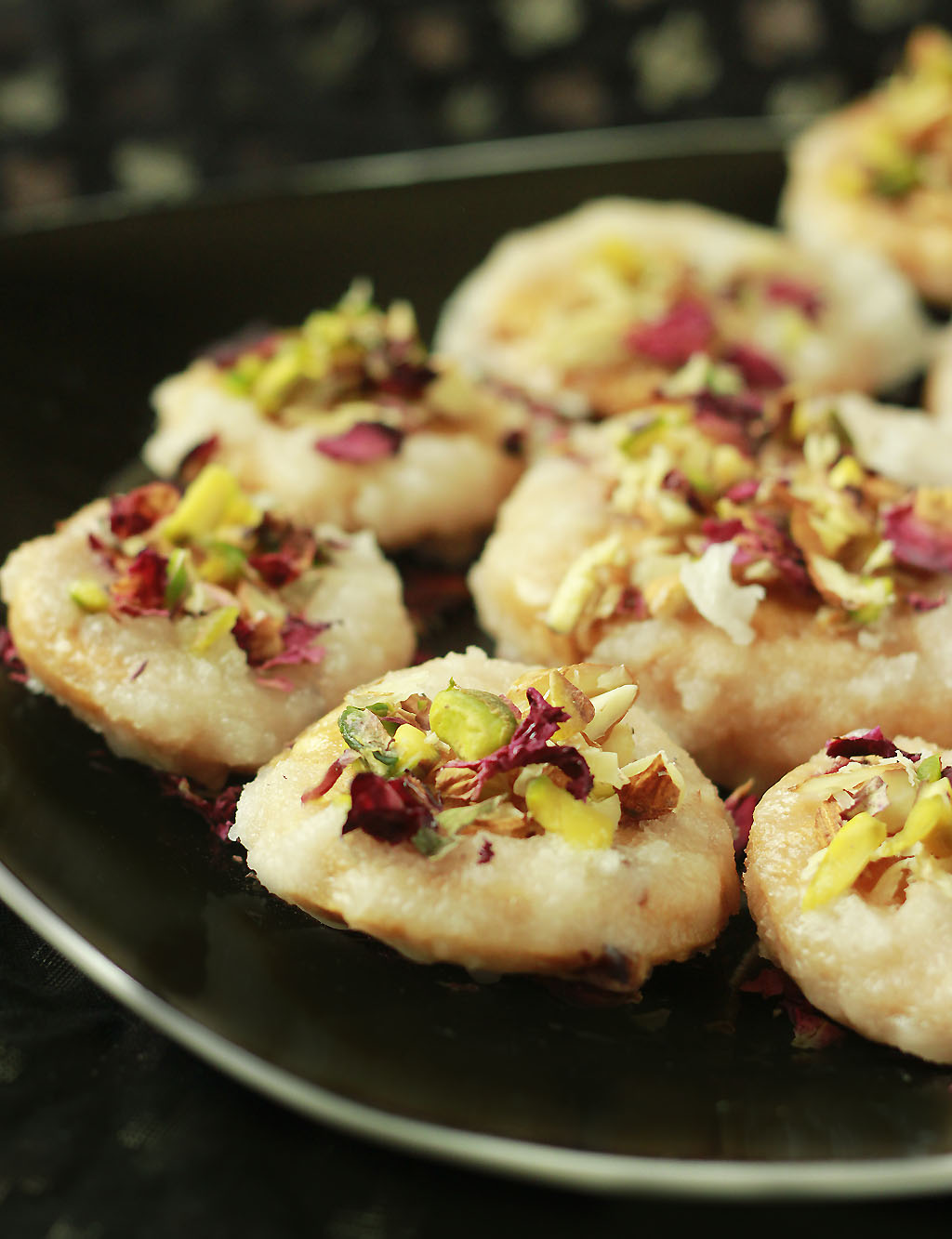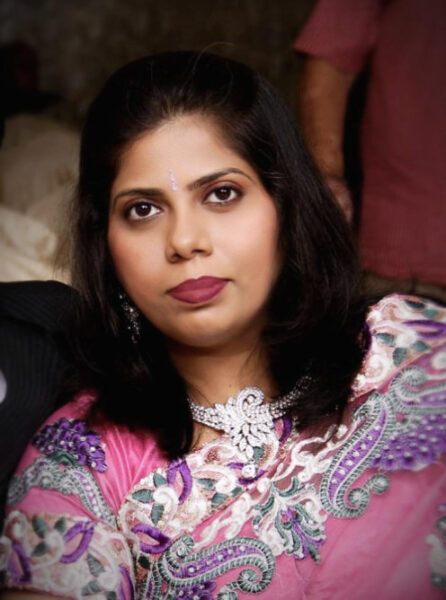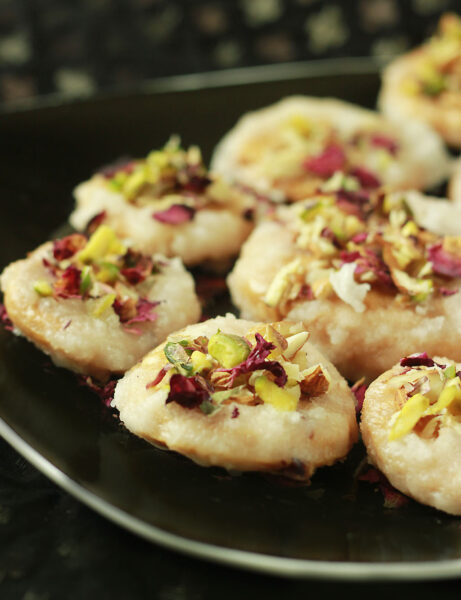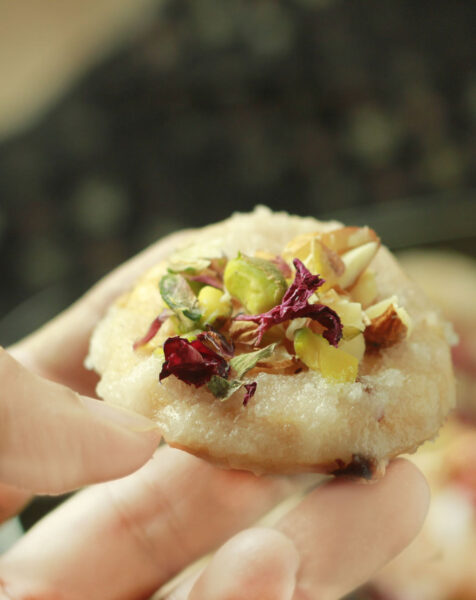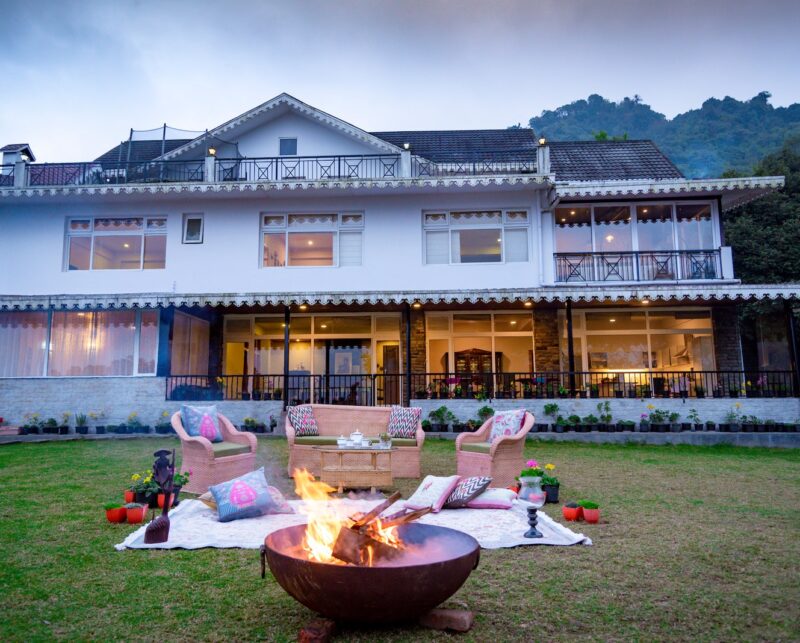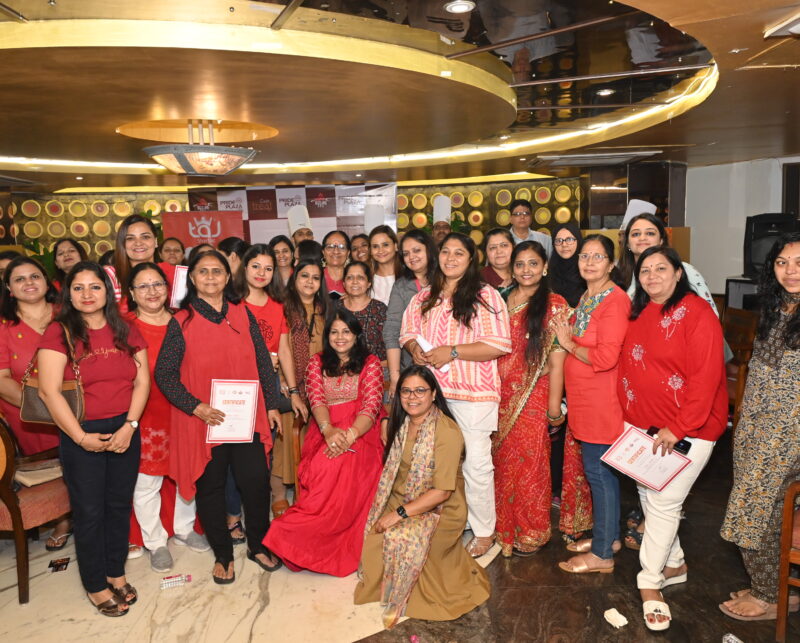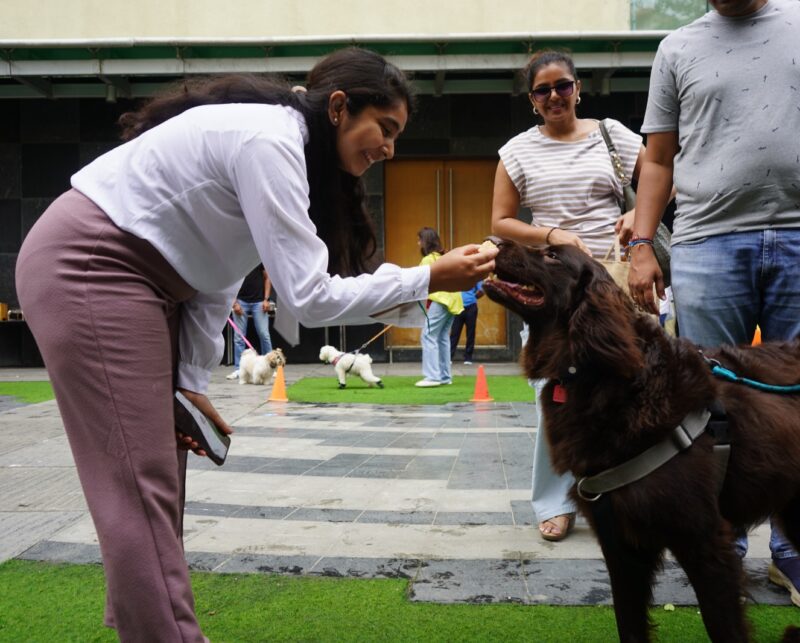SINDHI RECIPES FROM A LOST HOMELAND
Alka Keswani started blogging in 2008 with her website, www.sindhirasoi.com becoming one of the top references for Sindhi recipes.
How did you start cooking Sindhi Recipes?
It all began with helping my mother in the kitchen where I was fascinated by the world of spices, vegetables, savoury dishes and sweets, all combined to create delicious dishes and memorable meals.
What inspired you to start blogging about Sindhi food?
After I got married to the IT Guy, Deepak Keswani, I developed a keen interest in Computers. Using the PC at home with a modem in the year 1999, my better half worked on a personal project, compiling details of Sindhis from Ulhasnagar, highlighting the culture and business acumen of the community settled in Ulhasnagar, a Sindhi dominated area near Mumbai. He asked me to type some Sindhi Recipes for his project.
When hubby posted his work online, many young Sindhis settled abroad would write to us as to how the recipes of Sindhi food help them to recreate their Mom’s/Grandparent’s magic in their kitchen without spending a fortune on ISD calls to get the recipes from their respective families residing in India. Their messages would warm the cockles of our heart.
A few years later, NRI ladies from different communities settled abroad used to blog about their regional food and I would contribute recipes from Sindhi cuisine for their Blogs. In those days there was no dedicated Sindhi recipe blog/Sindhi cookbook available online. The response from Non Sindhis on such recipes was overwhelming but the absence of Sindhi cuisine on the global food radar was agonising.
In 2007, hubby was working on some projects involving WordPress and that’s when he came up with an idea to create a dedicated blog for Sindhi food. We finally created one in January 2008 and named it SindhiRasoi.com
Every Sunday, when hubby would be at home, I would cook a dish from Sindhi cuisine and he would click a picture using a basic point and shoot camera, transfer it to his PC, edit, type the recipe in the html format and publish it on my blog.
Eventually I learnt all the basics and started managing the blog on my own. He pitched in for all the technical (backend) help required to run the blog.The process was slow and the progress was slower. But the love and accolades kept pouring in from across the world.
How did you collect the recipes?
Most of the recipes shared on the blog in the early years were courtesy my Mother, Late Smt. Neeta Chhabria. I had this urge to learn everything she knows about cooking, particularly the Sindhi food. I would jot down all her recipes, cook the same in my kitchen, make rough notes, and convert her “pinch of this, handful of that” instructions into precise metric cooking measurements of the ingredients as per the blogging norms.
The readers of the blog would often request forgotten recipes (Like Doli Ji Roti, Khumbyun etc), some of which were unknown to me and that’s when Hubby’s grandmother, Late Smt Gauri Keswani would come to my rescue. Her authentic Sindhi recipes were highly appreciated by the followers of the blog.
Which recipes have been your favourites to blog about?
There are many favourites for varying reasons. When I first shared Sindhi Lolo recipe in the year 2008, the hike in the subscribers of the blog amazed me. No one has shared the recipe of the traditional Sindhi Lolo anywhere online prior to that.
Recipes of Kadhi, Koki and Saibhaji gained so much love from NRI Sindhis who craved for these Sindhi staples but they neither found these in any restaurants around nor cooked those in their kitchens due to lack of proper recipe instructions from the parents/family. Sindhi Boys in particular , had minimal experience of cooking meals so they needed precise measurements, straightforward instructions and ‘English’ names of many Ingredients used in Sindhi cuisine. They would leave comments on the blog about how grateful, how happy , how content they felt after cooking the basic Sindhi dishes in their Kitchens abroad thanks to SindhiRasoi.com
Recipes of Suhanjhro (Drumstick flowers), Pragri (Holi Special sweet), Gathri (Kadukash/Bheendi Pickle), Pani waari Khatain (Onions/Turnips in Kanji water) shared on the blog SindhiRasoi paved the way for Sindhi cuisine into the world of amazing regional recipes featured in many publications and finally the folks in the food industry figured out the cuisine beyond Kadhi and Saibhaji, Koki and Dal pakwan.
I had heard of Khumbyun, a variety of Mushrooms relished by Sindhis of the yore but never found those in markets in and around Mumbai. A reader of the blog, now a good friend, Hitesh Rajai, sent the fresh Khumbyun all the way from Bhavnagar so that I can cook, click and share the recipe with the world. I was so thrilled to cook the traditional curry, document and share it with the readers of the blog. Again, it was for the first time ever that Sindhi Khumbyun Recipe was shared online.
What are the top ingredients in your pantry?
Sindhi Garam Masala, D^aarunKhatta (Dried Pomegranate seeds), Kukum Ja Gulah (Kokum Phool), Ambhchoor (Aamchoor), and when in season also Fresh Green Garlic.
Your top dishes?
Sindhi Tamate ji Kadhi, Beeh Pakora/Tikki (Stuffed Lotus stem TIkki), Daas Karela (Stuffed Bitter melons), Kadhukash (Potli Pickle) are my signature dishes.
Memorable moments, achievements / accomplishments or accolades you would like to talk about?
Apart from the love that keeps pouring in from the world in the form of comments and messages, there are many moments that take my breath away.
>>The first ever article featuring Sindhi food and SindhiRasoi.com in a magazine (Food and Nightlife) in 2010 and in the same year when TOI published a special Edition ‘Sindhu’ with a write up featuring me and my blog, I felt humbled and honoured. I got many opportunities to contribute Sindhi recipes, food pictures, history of Sindhi cuisine etc for various Publications including TOI, Mumbai Mirror, Femina, Reader’s Digest, Mid Day, Hindustan Times etc.
>>When IFBA introduced the first ever Awards for Blogging community, I was thrilled to win the Best Regional food blog and Best Vegetarian Food blog for consecutive years (2013, 2014)
>>Contributed recipes for the much loved book We The Sindhis published by Mr Nandu Asrani, launched in the year 2013 by Dada J.P.Vaswani.
>>Had an honour to present the paper titled “The Culinary traditions of the Sindhi Community in India and the impact of migration on food rituals” in the first ever National Conference on the Archaeology, History, Sociology, and Ethnography of Food in India conducted by The India Study Centre (INSTUCEN) Trust and The Centre of Archaeology, Centre for Extra-Mural Studies, University of Mumbai in 2018
>>Apart from this, being invited to Sanjeev Kapoor’s office, sharing a meal with him, being invited to the sets of MasterChef India, meeting with amazing Chefs and wonderful human beings like Chef Kunal, Chef Ajay Chopra, Chef Vikas Khanna, people from the blogging fraternity and hospitality industry and being honored as the flag bearer of Sindhi Cuisine by popular chefs and authors are some of the most cherished moments in my life.
As many Sindhis from my generation are not trained to read and write in Persio Arabic script, I took up the challenge to learn and promote the script by interweaving the Sindhi script and Sindhi food. My AlifBe project wherein I shared a Sindhi Recipe for every Alphabet (52 alphabets) along with the History of the dish/anecdotes related to the particular dish received tremendous love from Sindhis and from the well known authors, writers, food enthusiasts from all across the world (Sindhis as well as Non Sindhis). The conversations helped me tremendously to fuel my research work regarding ancient and traditional Sindhi food.
What should be done to promote cuisines like Sindhi that are not part of the mainstream?
Creating awareness, approaching people from hospitality industry to focus on Sindhi food, training the chefs of restaurants to recreate the flavors of traditional food from Sindhi home kitchens, holding Sindhi food Pop ups in fine dine restaurants, encouraging young folks to feel proud of their culture and cuisine, to talk, to share home cooked food with the non Sindhi peers/colleagues, opting for Sindhi dishes in marriage buffets, thereby generating a curiosity and a demand for Sindhi food in the food industry, standardising and sharing recipes online for people to recreate the dishes in their kitchens are some of the steps that may help putting Sindhi cuisine on the global radar.
Your future plans?
Currently, along with working on a few book projects, I am also deeply involved in researching and documenting traditional as well as lost recipes from my beloved cuisine and promoting Sindhi cuisine, culture, festivals and food rituals on various platforms.
DOTHIYUN
Dothiyun (singular – Dothee) or Saatta, the popular Sindhi sweet, similar to Kutchi Saata or Gujarati Devada are highly addictive and a delight to relish.
Basically a dothee (D^othee in Roman Sindhi) is a fried, sugar glazed cookie made from All purpose flour and ghee/vanaspati.
Dothiyun are generally sent to married daughters and sisters on Thadri, a popular Sindhi festival.
Ingredients:
For Cookies/Mathri
1.25 cups All Purpose flour
A pinch of Salt
Two small pinches of Baking soda
4-5 tsp Ghee
2 tbsp Semolina
4-6 tbsp milk or as much needed
Oil/Ghee/Vanaspati for frying
For the Syrup
2 cups Sugar
3/4 cup Water
3-4 Green Cardamoms
3-4 drops of Rose essence
8 Almonds, 5-6 Pistachios and few dried rose petals, chopped finely
Method:
- Take 2 tbsp of semolina and add 2-3 tbsp of milk. Mix and keep aside, covered for 10-15 minutes.
- Take the flour, salt and baking soda and sieve the mixture.
- Rub in Ghee in the sieved mix. The mix must look like bread crumbs.
- To this mix add the soaked semolina and start kneading the dough.
- Keep adding milk, a tbsp at a time till the mix binds well into a dough. You may need around 2-3 tbsp of milk here.
- Cover the dough and let it rest for 20 minutes.
- After 20 minutes, knead the dough to smoothen out a little.
- Divide the dough into small portions and flatten each to make a small cookie. You will get around 9 – 10 cookies, each of 2” inch diameter with ½ inch of thickness.
- Heat oil/ ghee/ mix of both in a frying pan and once it is hot, lower the flame. Add 3-4 cookies at a time and deep fry on low flame, till light golden brown.
- Repeat the process till all ‘cookies’ are fried.
- Keep covered with a mesh till completely cool.
- Grease a steel thali with ghee and keep the chopped nuts and petals handy.
- In a pan mix sugar and water and cook it on low to medium flame.
- Add green cardamom, slightly pounded, if using.
- Keep stirring the syrup till it reaches 2 thread consistency. It may take around 10-12 minutes depending on the flame.
- Add a few drops of rose essence, stir and switch off the flame immediately.
- Let the syrup cool down a touch (3-4 minutes).
- Now stir the syrup vigorously for a minute and dip a fried ‘cookie’, turn around a few times and place the soaked cookie on the greased thali, pour some syrup over it, top it up with the garnish of nuts and petals.
- Take another cookie and dip in the syrup and repeat the above process for all the cookies.
- Allow the sugar glaze to settle well.
- Store D^othiyun in an airtight container. It stays well for a fortnight but then it hardly lasts till then!
ABOUT THE AUTHOR – ALKA KESWANI
Growing up in Ulhasnagar, I was fortunate enough to witness Sindhi culture, food, rituals, festivals and traditions and imbibe those in my day to day life. My parents gave me and my siblings (Two sisters) both; the wings and roots.
Of all the wonderful memories from my childhood, the Sunday special meals cooked by my dear mother and relished by the family top the charts.
Be it Kadhi Chaanvar or Dal Pakwan for a Sunday Brunch, or most aromatic and flavorful Bhugal Teevan (Mutton Curry), the Seyal Dhambhro, Keema Kofte, my mother always made our Sundays special with her signature dishes. I distinctly remember how she would make some extra mutton curry and would ladle it on the fresh Laadi pav chunks, topped with mint coriander chutney, crunchy onion slices and some sev that was enjoyed while watching a bollywood movie on Doordarshan on Sunday evenings.
I always accompanied my father; Late Nandlal Chhabria whenever he went to the vegetable market or the local grocery stores, every Sunday. The memories of him grinding Thaadal (Thandai) mix on Mahashivratri using the traditional boat shaped Mortar pestle, sieving the mix through Mulmul cloth and thereby making sweet Thaadal still fill my heart with nostalgia.
Similarly post marriage when my FIL, Shri Gul Keswani would light the charcoal Sigdi and my MIL, Smt Deepa Keswani would let TIdali Dal (Three lentils mix) cook for hours, flavoring it with annardana and a tempering of garlic, it would be a sight to see the whole family relishing the slow cooked dal with roti, assorted pakore, Tawa fried brinjal etc
I did my graduation in Microbiology. Somewhere between working with petri dishes in the Microbiology lab of my college to plating dishes cooked in my kitchen, I got intrigued with the culinary history of Sindhi food. My blog Sindhirasoi.com is a chronicle of my childhood memories related to Sindhi food, food culture and traditions and my (late) mom’s recipes. It is an honest attempt to bring Sindhi cuisine on the global food radar, to log the lost recipes and to connect the Sindhi diaspora through traditional and home style Sindhi recipes.
My husband, Deepak Keswani, a technical Architect is the force behind the blog. I learnt everything about photography, computers, blogging, the Sindhi script etc from him. Our son, yet another computer genius in the family, is pursuing a degree in Computer Science.


